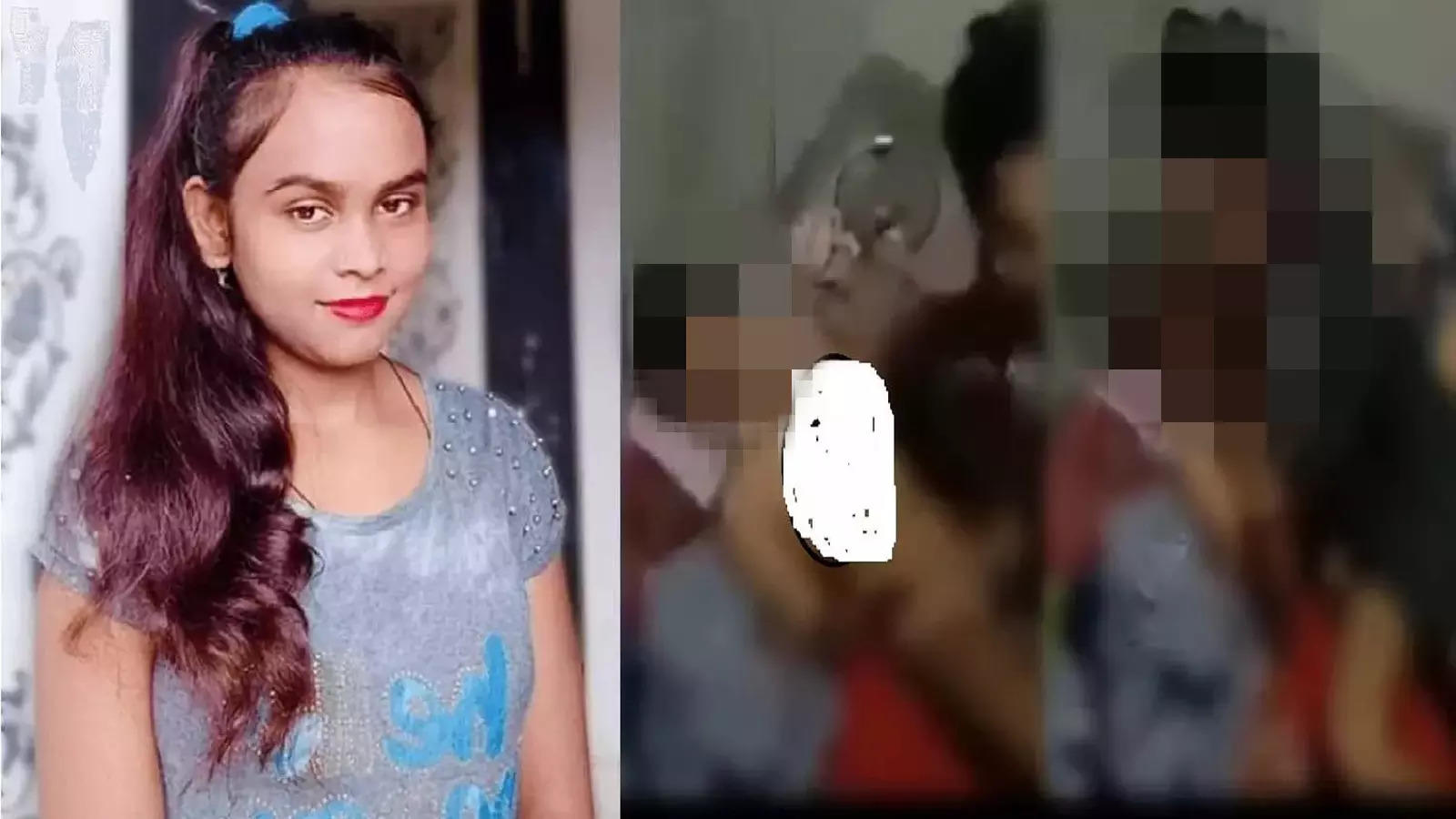Viral MMS Scandals: Chandigarh University & More - Updates
Are we truly safe in the digital age, or is privacy a relic of the past? The proliferation of leaked intimate content, fueled by the anonymity of the internet and the relentless pursuit of clicks, casts a long shadow over personal boundaries and the very fabric of trust.
The digital landscape has become a breeding ground for scandal, with individuals from all walks of life finding their most private moments splashed across screens worldwide. Recent events at Chandigarh University highlight the devastating consequences of such breaches. A hosteller allegedly leaked objectionable videos of her female mates, sparking massive protests and prompting a police investigation. This incident underscores the vulnerability of individuals in the face of digital exploitation and the urgent need for stricter regulations and enhanced digital literacy.
The Chandigarh University scandal is not an isolated incident. It is part of a larger trend that sees personal privacy eroded by technological advancements and the unchecked dissemination of private content. High-profile individuals, including social media influencers and celebrities, have also found themselves victims of malicious leaks. The repercussions extend far beyond the immediate individuals involved, damaging reputations, causing emotional distress, and raising serious questions about digital ethics and the responsibility of online platforms.
Let's delve into some of the individuals and incidents that have recently dominated headlines, and examine the various facets of this issue. This is not an exhaustive list, as new stories emerge daily. However, it provides a snapshot of the scale and scope of the problem.
| Individual/Event | Details | Impact/Consequences | Legal/Social Actions | Reference |
|---|---|---|---|---|
| Chandigarh University MMS Scandal | A female student allegedly filmed and leaked objectionable videos of her hostel mates. The videos were reportedly shared with the student's boyfriend. The police arrested one student and two others in connection with the case. The university was shut down for a week following massive protests. It was revealed that multiple videos might have been created. One of the alleged perpetrators was an army jawan. | Outrage, protests, emotional distress, breach of privacy, and psychological harm. The incident sparked debates about the safety and security of women in educational institutions. | Police investigation and arrests. The accused jawan made startling revelations to police. | Relevant News Article (Example) |
| Sona Dey (Social Media Influencer) | An alleged MMS video of Sona Dey, a social media star and YouTuber, went viral. The video purportedly showed her in a compromising and personal situation. | Shattered reputation, emotional distress and public scrutiny. | Sona addressed the issue directly, although the specific legal or other social actions is not provided in the source material. | Relevant News Article (Example) |
| Anjali Arora (Social Media Star) | Anjali Arora, known for her appearance on the reality show 'Lock Upp,' was targeted by a morphed MMS video that went viral. | Reputational damage, and emotional distress, and potential for financial loss. | Anjali Arora took legal action against news portals and YouTube channels for sharing the morphed video. | Relevant News Article (Example) |
| Deekila Sherpa and Aniket Lama | A recently leaked viral video featuring Deekila Sherpa and Aniket Lama sparked debate over privacy, relationships, and the ethical implications of reality television. | Discussion about privacy, relationships, and the ethical implications of reality television | No actions mentioned. | Relevant News Article (Example) |
| Other South and Bhojpuri Actresses | A list of actresses whose MMS videos got leaked. The specific names and details are not provided. | Reputational damage and emotional distress, and violation of privacy. | No actions mentioned. | Relevant News Article (Example) |
The cases of Sona Dey and Anjali Arora exemplify the pervasive nature of these scandals. Both individuals, prominent figures in the social media landscape, had their privacy invaded and their reputations threatened. Anjali Arora's swift legal action against the dissemination of a morphed video demonstrates the importance of fighting back against such violations, highlighting the importance of legal recourse in such cases. The incident involving Sona Dey, while not explicitly detailed in the provided text regarding her response, likely involved personal strategies of managing the situation, highlighting the psychological and social challenges faced by those caught in these circumstances.
The leak involving Deekila Sherpa and Aniket Lama introduces a broader context, bringing to light the privacy concerns within reality television. Such incidents often serve as a harsh reminder of the potential compromises participants make in the pursuit of fame and recognition, underscoring the ethical responsibilities of production companies and the audience's role in consuming such content. This case also raises questions on how relationships are affected in such scenarios.
The anonymity offered by the internet can be a powerful tool, but also a dangerous one. This creates a climate where individuals are vulnerable to attacks that can have a devastating impact. The ease with which personal content can be created, shared, and spread, often with malicious intent, poses a profound challenge to societal norms and legal frameworks. The absence of stringent regulations and effective enforcement mechanisms exacerbates the problem, making it difficult to protect those who find themselves targeted.
One of the most critical aspects of addressing this crisis is a holistic approach that tackles both the symptoms and the root causes. On the legal front, there is an urgent need for clearer and more robust privacy laws. These laws must encompass the full spectrum of digital activities and adequately protect individuals' rights to their personal information and content. Stronger penalties for the creation and distribution of non-consensual intimate images and videos are also necessary. Furthermore, legislation should include provisions for holding online platforms accountable for content that is shared on their services. This means platforms must have mechanisms for promptly identifying and removing harmful material, as well as procedures for assisting victims.
Parallel to legal reforms, there is a pressing need for enhanced education and awareness. Digital literacy programs should be implemented in schools, colleges, and workplaces to educate individuals about the risks associated with online activity. This includes teaching people about safe online behavior, how to protect their privacy, and how to identify and report cyberbullying and online harassment. Crucially, educational initiatives should focus on fostering a culture of respect and empathy, emphasizing the importance of consent and the devastating consequences of violating others' privacy. Raising public awareness about the legal and social ramifications of sharing intimate content can also help reduce the demand for and the spread of such material.
Moreover, mental health support and counseling services must be readily available to victims of these incidents. The psychological impact of having one's private life exposed in such a public and often humiliating way can be severe and long-lasting. Providing access to mental health professionals trained to deal with the trauma of online harassment and digital privacy breaches is essential for helping victims heal and rebuild their lives.
The role of online platforms in this crisis is multifaceted. They are both conduits for the spread of harmful content and potential vehicles for positive change. Platforms must be proactive in detecting and removing illegal and inappropriate material, including the development and deployment of advanced content moderation technologies. They should also work to create safer online environments through the implementation of robust reporting systems, the enforcement of clear terms of service, and the development of tools that empower users to control their online presence.
The recent incidents serve as a stark reminder of the challenges we face in the digital age. These cases highlight the need for an integrated response, one that combines robust legal frameworks, comprehensive education, and a collective commitment to respect, privacy, and digital responsibility. Only through a combined effort from individuals, lawmakers, online platforms, and society as a whole, can we hope to create a safer and more just digital environment.


